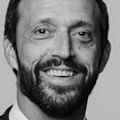Peak shale? Devon, EOG executives differ on timeline
The debate continues: Just how close is the Permian basin to peak production?
At the JPMorgan Energy, Power, Renewables & Mining Conference in New York on June 24, leaders of Devon Energy Corp. and EOG Resources Inc. shared differing perspectives on the issue, which was raised to prominence in May by Travis Stice of Diamondback Energy Inc. and Vicki Hollub of Occidental Corp. (OGJ Online, May 22, 2025).
Devon president and chief executive officer Clay Gaspar told JPMorgan analyst Arun Jayaram that he thinks any peak in output is “probably called a little bit early.” Speaking about Devon and other companies active in the Permian, he said innovations such as longer laterals and better well designs are setting the stage for production growth well into the future.
“I’m not betting the under on our industry’s ability just to continue to get better and have that accrete into continued growth,” Gaspar said.
Speaking for EOG, executive vice-president and chief operating officer Jeff Leitzell was more sober. Things have “definitely slowed,” he said, pointing to two factors that rise above others.
Firstly, operators are running into greater geological challenges and higher decline rates with newer unconventional projects. That means more wells need to be drilled each year. Secondly, Leitzell called out the industry’s greater capital discipline; firms just aren’t being tempted to spend as much to grow production—particularly on lesser-quality acreage—but are instead protecting their free cash flow and their ability to return capital to investors.
“It would take drilling wells [that] would be degrading capital efficiency,” Leitzell said. “And I don’t think companies are going to do that at this point.”
Exxon SVP talks M&A appetite
ExxonMobil Corp., Houston, 14 months ago completed one of the energy sector’s bigger acquisitions of recent years by paying roughly $63 billion for Pioneer Natural Resources Inc. and assuming about $5 billion of debt. Executives have since said that integration work has gone well; at the JPMorgan conference, senior vice-president Jack Williams added that that process doesn’t mean the giant isn’t thinking about its next big deal.
“We’re pretty wide open in terms of the ability to do […] more acquisitions. I would not say that the Pioneer acquisition has boxed us in at all,” Williams said. “What we’re looking for, really, is [situations where] 1+1=3. We’re looking for value. We have to be able to add significant value to […] what the current owner is adding for the resources, the assets that they’re developing.”
Williams added that the Pioneer acquisition won’t preclude ExxonMobil from looking for other deals in the upstream space—and in unconventional operations in particular. But he also pointed out that the company has ambitions to keep growing in high-value chemicals and materials as well as low-carbon businesses.
In addition to Pioneer, ExxonMobil has in recent years acquired carbon capture venture Denbury Inc. for $5.1 billion (OGJ Online, July 13, 2023). Over the past 2 years, executives also have generated $9.1 billion from various asset divestments across its global footprint.
Shares of Exxon (Ticker: XOM) fell about 3% June 24 to roughly $108. Over the past 6 months, they are essentially flat, leaving the company’s market capitalization at about $467 billion.
About the Author
Geert De Lombaerde
Senior Editor
A native of Belgium, Geert De Lombaerde has more than two decades of business journalism experience and writes about markets and economic trends for Endeavor Business Media publications Healthcare Innovation, IndustryWeek, FleetOwner, Oil & Gas Journal and T&D World. With a degree in journalism from the University of Missouri, he began his reporting career at the Business Courier in Cincinnati and later was managing editor and editor of the Nashville Business Journal. Most recently, he oversaw the online and print products of the Nashville Post and reported primarily on Middle Tennessee’s finance sector as well as many of its publicly traded companies.

